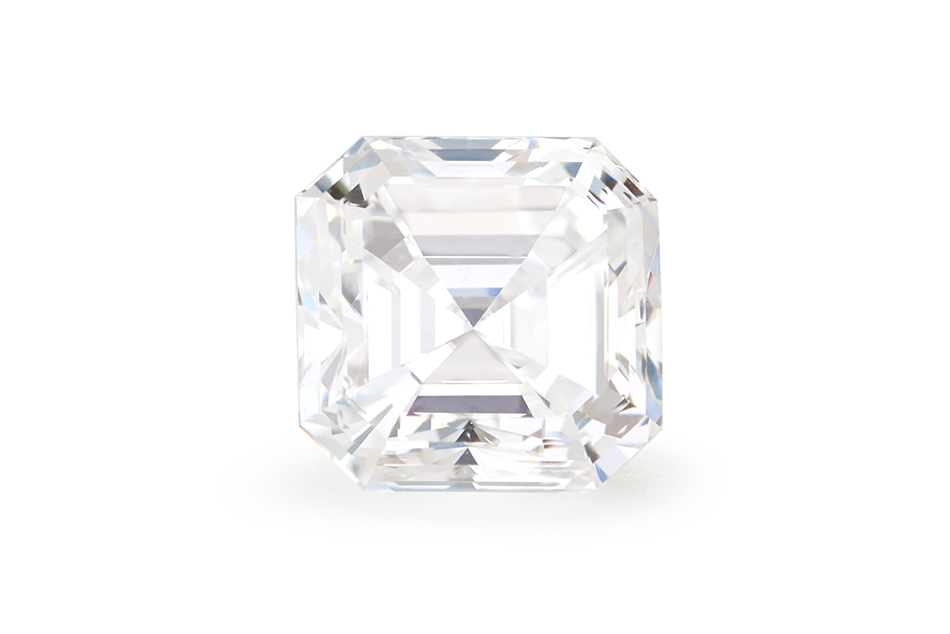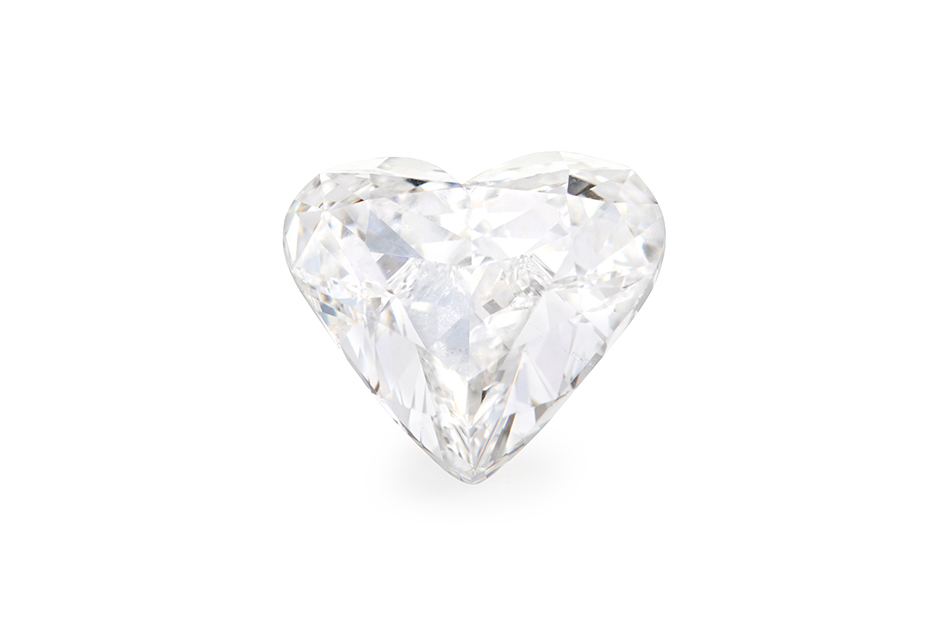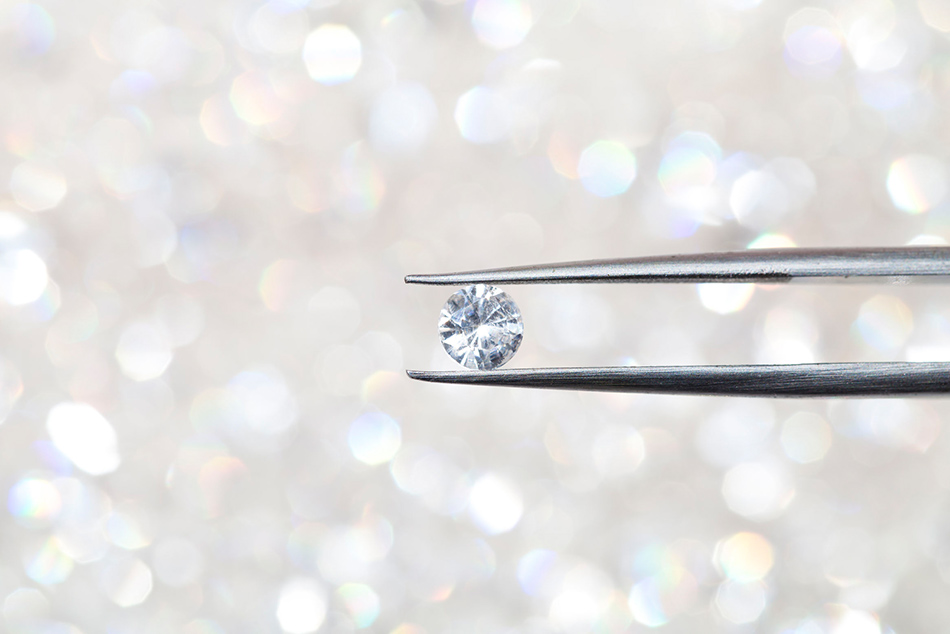Loose Diamonds - How to Purchase Them
Diamonds come in a wide variety of shapes, sizes and settings, and it can sometimes be tricky to find just the perfect jewel for you.
One way of getting exactly what you want is to purchase a loose diamond and have it cut and/or set to your own specifications.
But, where to begin? Here’s our guide to everything you need you to know about choosing a loose diamond. 
In what states can loose diamonds be purchased?
Loose diamonds come in two basic states: raw and cut. Raw state diamonds, also known as ‘rough’, are those that have not been cut or polished and, therefore, have the appearance of a basic rock. The advantage of raw diamonds is that you can choose your size (taking into account the weight loss from raw to polished state) and the way in which you want it cut.
Rough diamonds tend to be less expensive than polished stones but be prepared for additional costs in the custom cutting, which is usually priced per carat. Cut state diamonds, on the other hand, have already been cut into standard diamond shapes, such as round, princess, oval, emerald or marquise. The advantage of these diamonds is you know up front the exact carat weight of the polished stone. Plus, if you have already selected a setting, you can bring it with you to see which cut works best.
The four Cs
When purchasing any sort of diamond - loose or otherwise - it is important to consider the four Cs (carat, clarity, colour and cut).
Carat: This is probably the most important factor when choosing a loose diamond because the carat weight of a stone determines its size (1 carat equals around 0.2 grams of 0.007 ounces) and has the greatest effect on its price.
When purchasing a rough diamond, the eventual carat weight of the finished, polished stone can vary dramatically depending on the shape of the rough. For example, a 1 carat raw diamond could result in as little as 0.15 carats or as much as 0.8 carats of a cut and polished stone.
On average cut diamonds are usually half the size of the original rough, but the final decision will be made by the cutter to maximise as many as the four Cs, which means there are no guarantees.
Clarity: This describes the tiny imperfections, known as inclusions, found in every diamond. The fewer of these clarity characteristics a diamond has, the higher its quality. Each stone is ranked on the clarity scale. For example diamonds with a clarity grade of VVS1 or 2 (very slightly included) have minute inclusions that are difficult for a skilled grader to see under 10 times magnification and are generally the most popular choice.
You can save money by purchasing a diamond that appears flawless to the naked eye but actually has a lower clarity grading when examined under magnification. It is also worth noting that a flawless raw diamond may be worth more that a cut diamond with a low clarity grade.
Colour: This refers to the diamond's appearance and ranges from D (colourless) to Z (light yellow). More colour in a diamond can impede its 'fire' when the stone is exposed to light. The colour also affects its price. For transparent diamonds, the lower the grade, the higher the price. However, for fancy colour gems, such as brown diamonds, prices tend to be higher the more saturated the colour. It is important to remember that different shapes will reflect the colour in different ways so you need to find the balance that is right for you.
Colour is not so easy to grade for raw diamonds as often the skin of the rough hides the true tinted colour of the stone. For example, a rough piece with a greenish skin is likely to produce a medium to dark yellow cut stone, but there is no guarantee. Raw diamonds with transparent skin are known as 'glassies' and are easier to colour grade.
Cut: With a definition often mistaken for diamond shape (heart, marquise, emerald), cut grade is much more about how well a diamond's facets are cut to interact with the light. An excellent cut rating requires an immense amount of skill to reflect light brightly with perfectly proportioned pavilion depth, table size and girdle thickness. If you are looking to puchase a rough diamond, cut won't be applicable, but it sparkle matters to you, then this is the main metric you need to pay attention to.
Once you have considered the four Cs, prioritise which is most important to you; it might be size over colour, or clarity over cut. This will help you to make your choice without going wildly over your budget - always a risk if you opt for the very best of all four categories.
Proof of authenticity
When buying a loose diamond, it is important that you receive an accompanying certificate, essentially, its passport, which validates the stone’s quality and authenticity. The document, which is issued by an independent laboratory or in-house gemologist, informs the buyer whether the diamond is natural and includes its key attributes and qualities. This is particularly important for raw stones as, when it comes to cutting, a low-quality rough will yield a poor polished stone, or may even be unviable.
Choosing a setting
Different cuts of loose diamonds look better set in different precious metals. For example, the bright, whitish-silver colour of platinum looks especially attractive with princess or emerald cut stones. Conversely, round cut diamonds look stunning in a setting of yellow gold, which allows the stone’s clarity to really shine through. Ultimately, it’s about personal preference and buying a loose diamond gives you the freedom to design exactly what you want.
So, there you have it. Purchasing a loose diamond may require more effort than choosing an ‘off the shelf’, pre-set stone, but if you follow these guidelines, and always buy from a reputable dealer, the result can be the ultimate bespoke jewellery experience.






